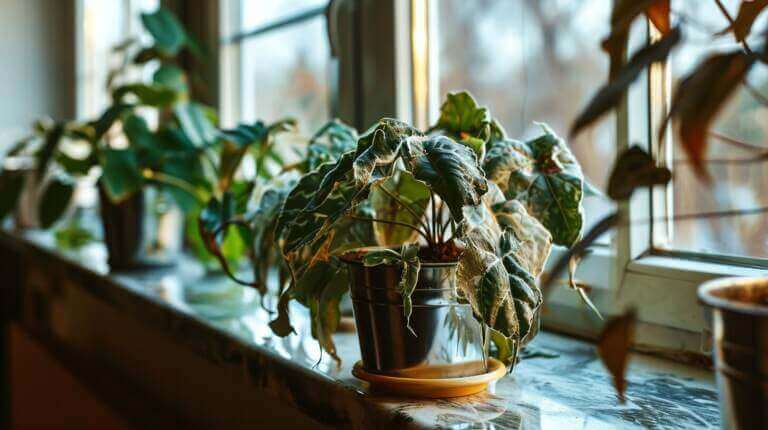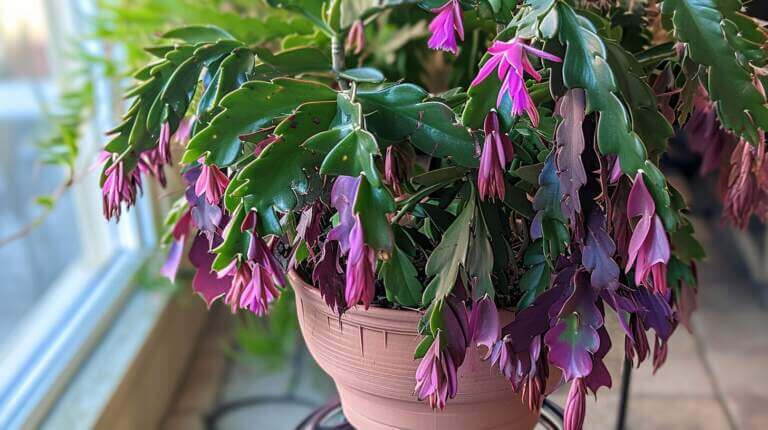Philodendron Care Guide: Tips for Growing Happy, Healthy Philodendrons Indoor Houseplant
Are you an indoors plant enthusiast looking to cultivate a thriving collection of philodendrons? Look no further.
In this comprehensive guide, we will unveil the secrets to growing happy and keep your plant healthy, ensuring that your green companions flourish with ease.
From selecting the right varieties to providing optimal lighting conditions, mastering watering techniques, and nourishing them with the right nutrients, this article will equip you with the knowledge and tools to become an expert philodendron caretaker.
Get ready to unlock the potential of your philodendrons and watch them thrive.
Key Takeaways
- Consider factors such as light requirements, growth habits, and overall maintenance needs when selecting philodendron varieties.
- Philodendrons thrive in bright, indirect light and should be placed near a window for filtered sunlight.
- Thoroughly saturate the soil while watering and avoid overwatering to prevent root rot.
- Choose organic fertilizers derived from natural sources and establish a regular fertilizing schedule to provide the right nutrients for philodendrons.
Choosing the Right Type Of Philodendron Plant Varieties
When selecting philodendron varieties for your indoor garden, it is important to consider factors such as light requirements, growth habits, and overall maintenance needs. Philodendrons are known for their stunning foliage, and there are many different types of leaves to choose from, each with its own unique shape, color, and texture. Some popular varieties include the heart-shaped leaves of the Philodendron hederaceum, the split-leaf appearance of the Philodendron bipinnatifidum, and the variegated foliage of the Philodendron ‘Brasil’.
To care for variegated philodendron, it is essential to provide them with bright, indirect light. This will help maintain the vibrant colors of their leaves. Avoid placing them in direct sunlight, as this can cause their leaves to burn. Additionally, make sure to water your philodendron thoroughly, allowing the top inch of soil to dry out before watering again. This will prevent overwatering and root rot.
Now that we have discussed the different types of philodendron leaves and how to care for variegated philodendron, let’s move on to the next important aspect of philodendron care: providing the perfect lighting conditions.
Grow Philodendron Houseplant – Providing Lighting Conditions
Properly illuminating your philodendrons is crucial for their growth and overall well-being. When it comes to providing the perfect lighting conditions for your plants, there are a few key factors to consider:
- Natural light: Philodendrons thrive in bright, indirect light. Place them near a window where they can receive filtered sunlight throughout the day.
- Artificial light: If natural light is limited, you can supplement it with artificial light. LED grow lights are a great option as they provide the right spectrum of light for optimal growth.
- Choosing the right size of pots: Opt for pots that are slightly larger than the current root ball of your philodendron. This allows room for growth while preventing the soil from becoming waterlogged.
- Proper temperature requirements: Philodendrons prefer temperatures between 65-85°F (18-29°C). Avoid placing them near drafts or in areas with extreme temperature fluctuations.
Care for Philodendron – Watering
Achieving optimal watering techniques is essential for maintaining the health and vitality of your philodendrons. Understanding soil moisture is key to preventing overwatering, which can lead to root rot and other issues. To ensure proper watering, it’s important to check the moisture level of the soil before watering. Stick your finger about an inch into the soil, and if it feels dry, it’s time to water.
When watering, make sure to thoroughly saturate the soil, allowing water to flow through the drainage holes. However, be mindful not to leave your philodendron sitting in standing water, as this can also lead to root rot.
By properly understanding soil moisture and preventing overwatering, you can ensure the health and longevity of your philodendron.
Moving forward, let’s discuss nurturing with the right nutrients.
Care For Philodendrons – Nurturing With the Right Nutrients
How can you ensure that your philodendrons are receiving the necessary nutrients for optimal growth and health? Choosing the right organic fertilizers and understanding nutrient deficiencies are key steps in nurturing your plants to their full potential. Here are four important points to consider:
- Choose organic fertilizers: Organic fertilizers provide a wide range of nutrients that are essential for your philodendrons. They are derived from natural sources and are free from harmful chemicals, making them safe for both your plants and the environment.
- Understand nutrient deficiencies: Nutrient deficiencies can manifest in various ways, such as yellowing leaves, stunted growth, or poor flowering. By understanding the specific nutrient deficiencies your philodendrons may face, you can provide the appropriate supplements to address these issues.
- Provide a balanced fertilizer: Philodendrons require a balanced fertilizer that contains nitrogen, phosphorus, and potassium in the right ratios. This will support overall growth, leaf development, and root health.
- Follow a fertilizing schedule: Establish a regular fertilizing schedule to ensure a consistent supply of nutrients. This will help your philodendrons thrive and maintain their health and beauty.
Propagation Techniques for Expanding Your Philodendron Collection
To expand your philodendron collection, you can utilize various propagation techniques and employ a coordinating conjunction to ensure successful growth and propagation.
One popular method is water propagation, which involves placing a cutting in water until roots start to develop. This technique allows you to closely monitor root growth and easily transfer the cutting to a potting mix once roots are established.
Speaking of potting mix, there are several options to choose from. A well-draining mix that retains moisture is ideal for philodendrons. You can opt for a commercial potting mix or create your own by combining equal parts of peat moss, perlite, and vermiculite. Another option is to add organic matter, such as compost or coconut coir, to improve moisture retention.
Remember to keep the soil slightly moist, not soggy, and provide bright, indirect light for optimal growth.
With these propagation techniques and potting mix options, you’ll be well on your way to expanding your philodendron collection.
Frequently Asked Questions
What Causes Philodendron Leaves to Drip Water?
Philodendron guttation explained: When you notice your philodendron leaves dripping water, it is a normal phenomenon known as guttation. This occurs when the plant regulates its water balance. During the night, when transpiration slows down, excess water is forced out through specialized structures called hydathodes.
How Can I Prevent My Philodendron Leaves from Curling?
If you are wondering about solutions for curled philodendron leaves, there are several things you can do to prevent this issue. Firstly, make sure your plant is getting enough water, but avoid overwatering. Ensure it is placed in a spot with sufficient indirect sunlight. Maintain a consistent temperature and humidity level, and use a well-draining potting mix. Lastly, regularly inspect your philodendron for pests and take appropriate measures if needed.
What Should I Do If My Dog Eats a Philodendron Plant?
If your dog eats a philodendron plant, it is important to be aware of the potential effects of philodendron on dogs. Philodendrons contain calcium oxalate crystals, which can cause oral irritation, drooling, difficulty swallowing, and vomiting. Monitor your dog closely and contact a veterinarian for guidance and any necessary treatment.
Is Propagating a Split Leaf Philodendron Difficult for Beginners?
Propagating a split leaf philodendron may seem daunting for beginners, but with proper techniques, it can be successful. Here are some valuable tips for propagating split leaf philodendron: Choose a healthy stem, make a diagonal cut beneath a node, remove lower leaves, and place in water or moist soil. Ensure adequate lighting and humidity, mist regularly, and avoid overwatering. Be patient as roots develop, and soon you’ll see new growth on your propagated plant.
When Should I Prune My Philodendron Plant for Optimal Care and Growth?
To ensure optimal care and growth for your philodendron plant, it is crucial to know when to prune. By following a step-by-step guide to prune philodendron, you can maintain its health and enhance its growth. Pruning should be done in early spring or summer to allow for a quick recovery and encourage new growth. Remember to use clean pruning shears and remove any dead, damaged, or diseased leaves or stems.
How Does Proper Care and Maintenance Impact the Different Types of Philodendron Varieties?
Proper care and maintenance play a critical role in the overall well-being of different types of philodendron varieties. Adequate watering, suitable lighting conditions, and regular fertilizing are key factors for their health. Neglecting these aspects can lead to stunted growth, yellowing leaves, or even plant death. By understanding and fulfilling the specific requirements of each type of philodendron variety, enthusiasts can ensure their thriving and vibrant foliage.
How Often Should I Repot My Philodendron, and What Type of Potting Mix Should I Use?
Repotting frequency and potting mix options are important considerations for maintaining the health and growth of philodendrons.
The frequency of repotting largely depends on the size and growth of the plant. Generally, it is recommended to repot philodendrons every 1-2 years to provide fresh nutrients and ample space for root development.
When choosing a potting mix, it is advisable to opt for a well-draining mix that retains moisture without becoming waterlogged. A mixture of peat moss, perlite, and a small amount of compost can be a suitable choice.
Are There Any Specific Temperature or Humidity Requirements for Philodendrons?
Temperature and humidity requirements play a crucial role in the successful growth of philodendrons. Creating the perfect environment for these plants involves maintaining an optimal temperature range of 60-85°F (15-29°C) and a humidity level of 40-60%.
These tropical plants thrive in warm and humid conditions, mimicking their natural habitat. By providing adequate temperature and humidity, you can ensure that your philodendrons grow healthy and happy, promoting lush foliage and vigorous growth.
How to care for your philodendron?
To care for a philodendron, keep your philodendron in a location with indirect light, keep the soil moist but not waterlogged, and maintain a warm temperature with high humidity. Regularly prune to encourage new growth.
When is the best time to prune my philodendron?
The best time to prune your philodendron is during the growing season, typically in the spring and summer. This allows the plant to recover and produce new growth.
What are some common types of philodendrons?
Some common types of philodendrons include the heartleaf philodendron, fiddle leaf philodendron, and the split-leaf philodendron. Each species of philodendron has its own care requirements.
How often should I water my philodendron?
Water your plant when the top inch of soil feels dry. Overwatering can cause yellow or brown leaves.
How do I know if my philodendron needs to be repotted?
If you notice your plant’s roots are growing out of the drainage holes or if the plant dries out quickly after watering, it may need repotting.
What are some tips for growing a healthy philodendron?
Some tips for growing a healthy philodendron include providing indirect light, maintaining high humidity, and using a well-draining potting mix. Regularly check for signs of pests or disease.
Can I grow my philodendron as an indoor plant?
Yes, philodendrons are tropical plants that make great houseplants. They can thrive in indoor conditions if proper care is given.
How do I propagate my philodendron?
Philodendrons can be propagated from stem cuttings. Cut just below a leaf node and place the cutting in water until roots develop, then plant in soil.
Why are the leaves on my philodendron turning yellow?
Yellow leaves can be a sign of overwatering or lack of nutrients. If you notice yellow leaves, adjust your watering schedule and consider using a balanced fertilizer.
What should I do if the leaves on my philodendron start to droop?
Drooping leaves can be a sign of overwatering or underwatering. Check the moisture level of the soil and adjust your watering schedule as needed.







